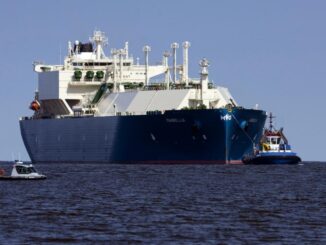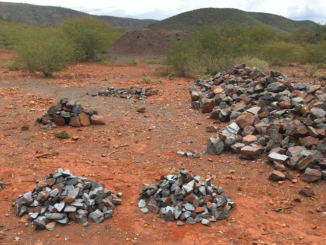
Headline trading on the forward freight agreement markets and uncertainty on the physical voyage charter sector were the first impacts on the Americas tanker markets from Russia’s military invasion of Ukraine.
Since the level of sanctions that is going to be placed on Russia from Western powers is unclear so far, Mackay said it was too early to tell how ton miles and trade patterns could change and whether and to what extent energy infrastructure might be impacted.
On the FFA market, trade for the March 270,000 mt VLCC US Gulf Coast-China contract peaked at the equivalent lump sum value of $5.7 million, up $900,000 on the day, before coming off to the equivalent lump sum value of $5.5 million. Rates on the 70,000 mt Aframax USGC-UK Continent March FFA contract peaked at $27.3312/mt or at the equivalent Worldscale points of 146, up w23 from S&P Global Platts assessment on Feb. 23.
“The unavailability of Black Sea oil will redirect US and WAF crude to Europe, Brazil, AG and US will get busy on the Vs,” a shipbroker said, explaining the gains on the paper markets.
With large swaths of Russian exports heading to Europe, European refiners would be forced to seek supply elsewhere, Mackay said during the Teekay Tankers earnings call.
If sanctions were undertaken by the EU and the US, around 2.4 million b/d of crude would need to be replaced, and 70%, or 1.68 million b/d of that by EU countries alone. Were this shortfall to be sourced from the USGC and the Middle East, “there could arguably be an increase in demand for ocean transport equivalent to 2 VLCCs per day needed, with each VLCC then being employed for at least 30 days,” Charles Weber Research said in an analysis. The report expects the Aframax and Suezmax segments to share in this new seaborne demand.
Physical freight cautiously higher
On the Americas midsize dirty tanker segment, all eyes were on ships that traditionally carry the largest volume of crude out of the USGC to Europe.
Market participants in the Aframax segment were mixed to determine a tradable freight level for the benchmark 70,000 mt USGC-UKC route as they weighed the extent of a pending shift in trade flows and potential risks of conducting business with certain participants. Freight for the route was talked at a wide range of w127.5 to above the w145 level after Lukoil booked the Sea Turtle with a March 6-7 laycan. However, many market participants believed the deal to be at a premium due to the charterer’s Russian interests.
“There is not a solid ‘market level’ now,” a second shipbroker said. “Rates will be sentiment driven and only traded in the next 24-72 hours if absolutely necessary.” Platts assessed freight for the run at w135, up w2.5 on the day.
Americas Aframax fundamentals outside of geopolitical tensions remained on the side of bearishness, with ample positions available for prompt loading in the region.
For VLCCs freight for USGC, Caribbean-Asia Pacific runs pushed lump sum $400,000 higher on the day, as geopolitical uncertainty compounded on a recent trend of increasing rates. Rising rates in the closely connected Brazil and West Africa regions over the past week have heightened the sentiment that freight in the USGC would follow suit.
Freight for the 270,000 mt USGC-China route was assessed at $5.2 million, up $400,000, or 8.3%, on the day after market participants consistently talked freight above the last done level for a USGC-South Korea run at $4.95 million seen in late trading Feb. 23.



